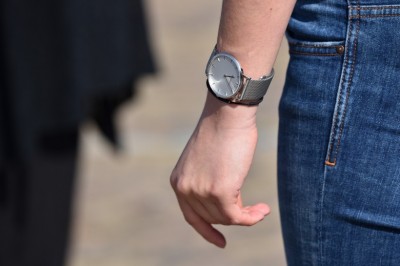The Guinea Pig, a culinary delicacy by Rick Vecchio
The guinea pig is a cuddly pet for millions of children around the world. But in Peru, the rodents birthplace, the guinea pig, or "cuy" is a mainstay of Andean folk medicine and a religious sacrifice to mountain deities, known as Apus.
But primarily, it is a culinary delicacy, enjoyed by Peruvians who consume an estimated 65 million of the rodents each year. The dining experience normally requires two hands to pick, sinewy meat from a bony carcass.
For those willing give it a try, it is high-protein, low-cholesterol dish, and incredibly delicious.
Guinea pigs were domesticated in Peru as far back as 2500 B.C., and probably long before that, according to Daniel Sandweiss, an archeologist at the University of Maine. His excavation in the 1980s in the Chincha Valley, near Perus central Pacific coast, demonstrated that current ritual healing practices with guinea pigs date back at least to the Inca Empire.
A 17th-century native chronicler, Guaman Poma de Ayala, wrote that the Incas sacrificed 1,000 white guinea pigs along with 100 llamas in Cuzcos main plaza each July so that neither the sun nor the waters would harm the food and the fields."
From the beginning of the Spanish colonization, the Catholic Church brutally suppressed Indian religious icons. But the guinea pig was spared.
Geronimo de Loayza, the first bishop of Lima from 1545 to 1575, refused to abide by an edict by Spanish priests carry out a mass extermination of the rodents, fearing it would spark a rebellion.
The Spanish colonizers made Indian artists paint, weave and carve items with Catholic themes to decorate churches and evangelize the natives.
The artists copied prints imported from Europe, but added Peruvian touches, creating a unique Andean baroque" style.
Today, churches in Lima and Cuzco still display Indian depictions of the Last Supper with Jesus and the 12 disciples feasting on roasted guinea pig.
*The most common preparation for cuy is "chactado," or simply, deep-fried, and served with the head staring up from the plate. It is served this way in places like Trujillo and Chiclayo on Perus northern Pacific coast, and in Cajamarca, Ayacucho, Huaraz, Arequipa and Cuzco, in the northern and southern Andes. *
*But in the central Andean Department of Huanuco, one homestyle recipe stands for its soft, succulent texture, and spicy flavor and aroma - and no head to stare back at you, unless you specifically request it. Heres he recipe: *
*Cuy Picante Huanuqueño Style*
*Ingredients: *
*- **2 large guinea pigs*
*- **1 tablespoon crushed garlic*
*- **1½ teaspoon salt *
*- **1½ pepper*
*- **1½ teaspoon cumin powder*
*- **2 tablespoons aji panca (a Peruvian deep-clay red chile, liquefied in a blender)*
*- **2 tablespoons aji mirasol (a Peruvian dark yellow chile, liquefied in a blender)*
*- ** 1 cup cooking oil or margarine *
*- **10 scallions *
*- **The guinea pigs hearts, livers (and in an authentic version, also the intestines, thoroughly cleaned) *
*- **1 tablespoon of crushed peanuts*
*- **8 yellow potatoes boiled and skinned*
*Preparation: *
*Cut and quarter the guinea pigs, salt and pepper, then fry until golden brown. Put aside in a warm dish. In a heavy skillet, lightly greased with a few splashes of oil, combine the garlic, aji panca and aji mirasol over high heat. Mixing and scraping the ingredients from the bottom of the pan to keep it from sticking; continue until the mixture is thoroughly cooked to a golden brown. Chop the scallions, separating the white bulbs from the green stalks. Add the finely chopped scallion bulbs to the pan with the cumin. In a separate pan, combine the hearts, livers and peanuts and cook until thoroughly done, then place in a food processor or blender to liquefy. Add and mix with aji-garlic mixture in heavy skillet. Add guinea pig pieces, cooking for 10 to 15 minutes. Let stand for at least 15 minutes. Serve over sliced boiled potatoes sliced.
Serves four.*
Rick Vecchio, Associated Press Writer. People on Peru Tours often find it amazing that people in Peru is used to eat the guinea pig, but the truth is that its a common tradition, especially in the cities of the Andes. Lima city tours often show this tradition, but its always better to see it live on the Andes.






















